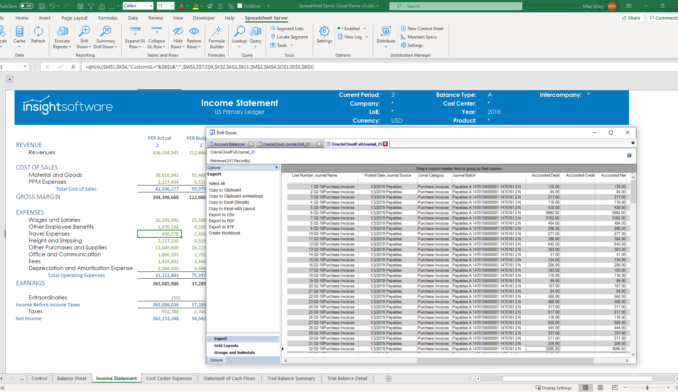Making the Rolling Forecast Reality with an Incremental Approach
If your budgetary planning process hasn’t evolved over time, you may still be working with a manual, time-intensive process each year that inspires resignation and dread from planners and line managers alike. To adjust for accelerating technological and market forces, you may want to transform this yearly low-return exercise into a rolling forecast that truly helps your company effectively plan and measure performance.
Also known as continuous planning, rolling forecasting may be the biggest trend in financial planning and analysis in the last five to ten years. For companies who can’t execute continuous planning, the biggest impediments are often time and cost. Current manual planning processes and tools don’t support quick and easy incremental adjustments, only complete “rebuilds” that require too many hours to tackle more than once a year.
Cost, then, comes into play when organizations realize that a specialized planning solution may be needed to accomplish rolling forecasting. However, incremental improvements to existing processes and tools may be a faster and more realistic approach than an expensive technology solution, big-bang implementation, and completely new process for managers and planners.
Big Solutions, Big Costs? Not Necessarily
To achieve continuous planning, big companies often invest in dedicated enterprise resource planning (ERP) planning solutions like Oracle Hyperion Financial Management (HFM) and SAP Business Planning and Consolidation (BPC), as well as dedicated teams for managing those systems and related processes. These solutions offer sophisticated process automation and planning capabilities, but can be too complex, costly, and risky for small and medium-sized enterprises (SMEs).
The majority of companies still use Microsoft Excel for part of their planning process. However, if your Excel planning model isn’t directly linked to ERP system data, you have a manual process that’s too cumbersome for monthly forecasts. Accuracy is also a concern, as spreadsheet data may have been extracted from your ERP system at different times, introducing version control errors.
Manual Excel processes are difficult to accelerate and scale, and this leads to stagnation in your planning processes and capabilities. Because producing a budget from the bottom up can’t be done efficiently, you may regress to simply trending last year’s budget via a top-down approach.
Alternatively, Excel planning add-ins offer cost and functional advantages that especially appeal to SMEs. By integrating planning functionality into an Excel interface that directly links to your central database, these add-ins let you gradually step toward automation and real-time modeling as opposed to an expensive big-bang planning solution implementation. Real-time integration with the ERP system eliminates manual historical data collection steps, supports refreshable planning models, and automates uploading of Excel-based planning back into the ERP system, all of which support rolling forecasts.
Small Steps to Substantial Benefits
If you do choose an Excel add-in that integrates to your ERP system, here are three steps that can make the journey to rolling forecasts a smooth one by expediting the project while providing a fast return on investment:
- Conduct a current state assessment of your planning process
- Create current process mapping with data inflows and outflows, as well as roles and responsibilities.
- Document where and how Excel is used.
- Identify process gaps and inefficiencies.
- Identify key stakeholders and champions for the transition to rolling forecasts.
- Create process mapping for the desired future state.
- Prepare a cost element and account structure for planning
- Modify your existing hierarchy for both financial and managerial reporting, or
- Create an alternate hierarchy specifically for planning and management reporting.
- Integrate your current Excel planning framework with live ERP bi-directional data using Excel add-ins
- Use existing templates and models and incrementally tweak them for quick results and ongoing improvements.
Following these steps, you could achieve modest improvements every month for the next six months, significantly improving your forecasting capability before the next annual planning cycle starts, and in bite-sized pieces for managers to easily digest.
Bottom Line
Continuous planning is a much more useful measure of performance management when compared with annual budgeting. Annual budgets are still valuable and necessary in terms of cost control, but can be grossly misused as a performance benchmark, assuming a change in market conditions or strategy during the twelve months the budget is in force. In contrast, providing your managers the opportunity to reflect and re-organize plans each month provides a true measuring stick for performance evaluation and improvement.
Ready to simplify your reporting process? Contact us today.







